Coronavirus government response updates: Trump envisions county-by-county risk assessments in new guidelines
He says the guidance is meant for state and local decisionmakers.
The federal government has been rolling out its response to the coronavirus crisis, trying to slow the spread and prop up the economy, which has taken a severe hit, as shown by historic jobless claims numbers out Thursday.
On the eve of the dire report, at a White House coronavirus task force briefing, President Donald Trump said that "large sections of our country" can probably "go back to normal" much sooner than others, while the nation's leading expert on pandemics, Dr. Anthony Fauci, warned that "the virus makes the timeline."
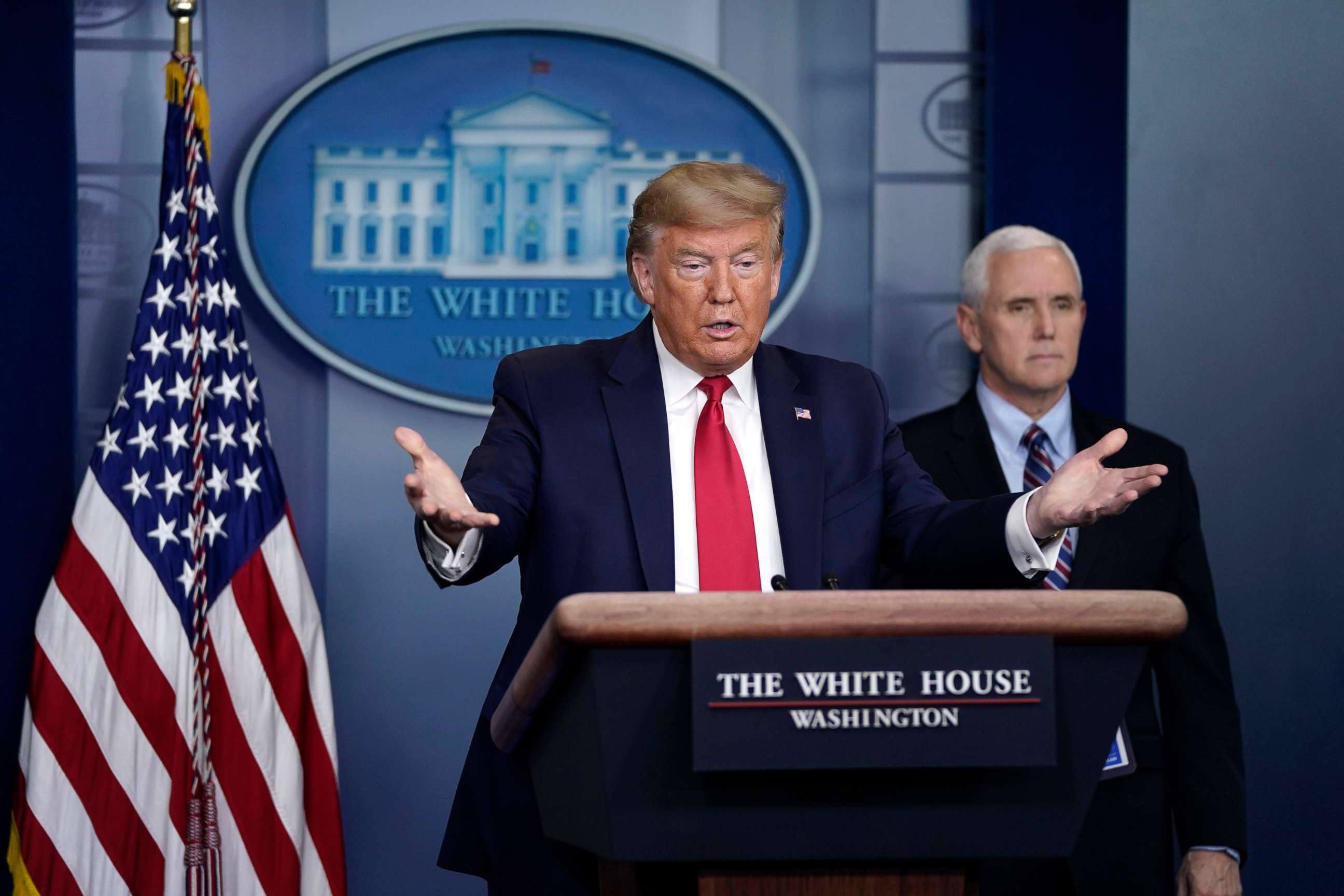
In an apparent effort to combat the growing economic fallout, the Senate cleared a massive relief package by unanimous vote late Wednesday. It moves on to the House for a vote set for Friday.
Tune into ABC at 1 p.m. ET and ABC News Live at 4 p.m. ET every weekday for special coverage of the novel coronavirus with the full ABC News team, including the latest news, context and analysis.
Here are Thursday's most significant developments in Washington:
- Thursday is the 11th day of the president's 15-day guidelines to slow the spread
- The Senate passed a $2 trillion relief package in a unanimous vote, heads to the House
- In letter to governors, Trump says he's revisiting system for social distancing guidelines
- Trump confirms he'll appear at the White House coronavirus task force briefing scheduled for 5 p.m.
- The Department of Labor reports a record 3.28 million workers in the U.S. filed for unemployment claims last week
Here are the latest developments in the government response:
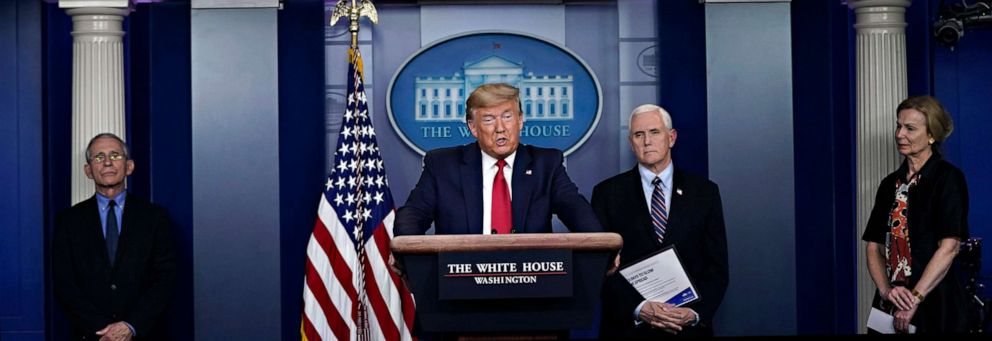
Trump: 'We gotta go back to work'
President Trump opened the daily White House briefing on how the government is handling the coronavirus crisis by saying, "We will vanquish this virus."
He spoke once again about how Americans need to return to work to restart the nation's shutdown economy, saying the time would come "pretty quickly."
While he didn't mention the Easter timeline he raised earlier this week, Trump said dates are being discussed and suggested that some sections of the country may loosen social distancing guidelines before others, with increased risk assessment through testing and contact surveillance.
“Our people want to work. They want to go back. They have to go back. And we're going to be talking about dates,” Trump said. “A lot of progress is made, but we gotta go back to work. We may take sections of our country. We may take large sections of our country that aren’t so seriously affected and we may do it that way. But we've got to start the process pretty soon.”
Trump also commented on the record-shattering 3.2 million jobless claims report out today, predicting "a very fast turnaround once we have a victory over the hidden enemy."
“Well, it's nobody's fault. Certainly not in this country. Nobody's fault,” he said. “When I heard the number -- I mean, I heard it could be 6 million, could be 7 million. It's 3.3 or 3.2 (million),” the president said, suggesting he expected worse. “But I think we’ll come back very strong the sooner we get back to work. Every day we stay out it gets harder to bring it back very quickly.”
Trump said FEMA had shipped out over 30 million different types of face masks and shields, around 15 million gloves and nearly 6,000 ventilators from the national stockpile.
“And we've got tremendous amounts of equipment coming in. A lot of great companies are making equipment right now. The ventilators obviously, they take a little longer to make, but we have a lot of companies making them,” Trump said.
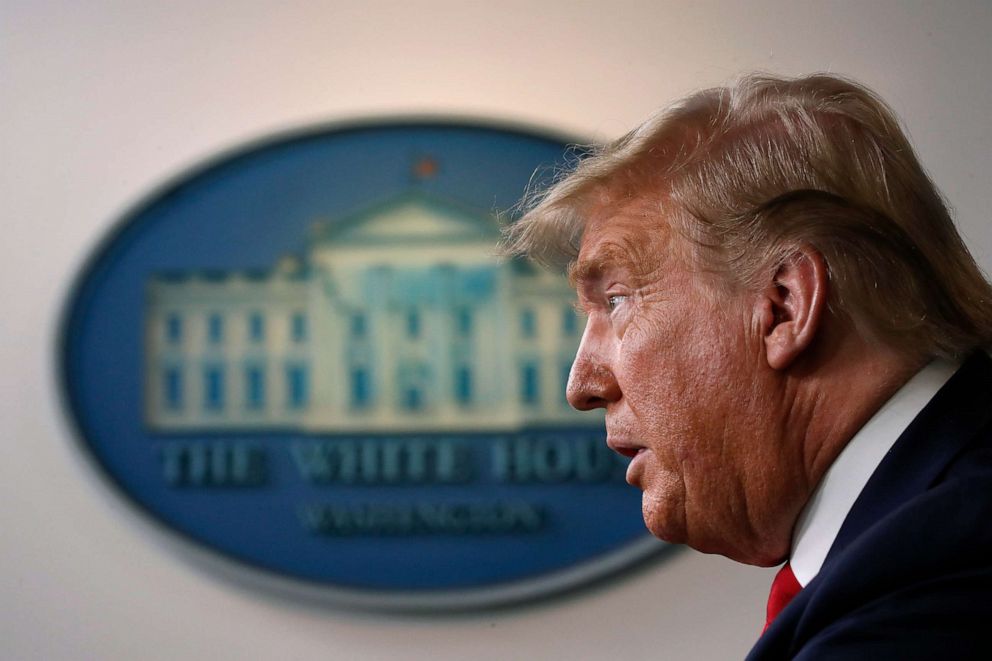
He announced that supplies would be shipped to New York aboard the Navy hospital ship USNS Comfort when it departs Norfolk, Virginia, on Saturday rather than three weeks from now as initially expected. He said he would be on hand to send the ship off.
“I told the governor, 20 minutes ago, Governor Cuomo, that the ship will be arriving in New York harbor on Monday. I think I'm going to go out and I'll kiss it good-bye. I'll go to -- it's in Virginia as you know. I will go and we'll be waving together because I suspect the media will be following,” the president said.
“I actually look forward to Saturday to see it go. The ship will arrive, and I believe it's going to get a little bit of a ceremony,” he continued. “There's something very beautiful about it.”
When asked if it was safe for Americans to assume that the current guidelines will be extended, Trump said the guidelines should continue beyond the outbreak, even suggesting people maybe shouldn’t shake hands anymore, while still emphasizing the U.S. should go back to work.
“I want those guidelines to go even when we're open and fully operational, and frankly much of the guidelines like shaking hands, maybe people aren't going to be shaking hands anymore,” Trump said.
“As soon as we open, that doesn't mean you're going to stop with the guidelines. You’ll still try and distance yourself. Maybe not to the same extent because you have to lead a life, but I think the time is coming.”
Trump, who has frequently called the coronavirus the "Chinese virus," said he didn't know how to take concrete actions to protect Asian Americans, which he promised to do in a tweet earlier this week, but downplayed potential threats.
"I don't know, all I know is Asian-Americans in our country are doing fantastically well, I'm very close to them as you know and I think they appreciate the job we're doing. I wanted to put that statement out because Asian-Americans are great part of our country," Trump said, referring to his comments Wednesday that he would no longer use the term.
He also said he would speak with Chinese President Xi Jinping this evening.
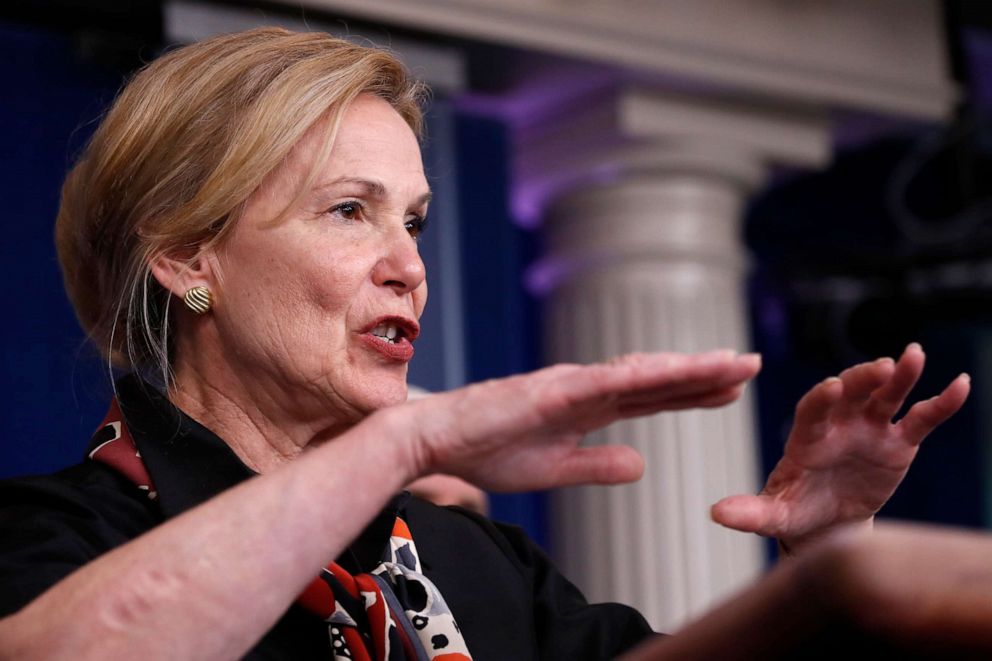
Dr. Deborah Birx tried to assure Americans that essential equipment is still accessible in the health care system, an apparent effort to counter reports that a majority of the population could be infected in two to three months.
“To say that to the American people, to make the implication when they need a hospital bed it won't be there, or when they need that ventilator it won't be there. We don't have evidence of that right now,” she said. “There is no reality on the ground where we can see that 70% of Americans will get infected in the next 8 to 12 weeks."
Trump envisions new county-by-county guidelines
In a new letter to the nation’s governors, President Trump says his administration is working on revising social distancing restrictions through a system potentially classifying U.S. counties as high-risk, medium-risk or low-risk.
"Americans across the country are hoping the day will soon arrive when they can resume their normal economic, social, and religious lives," Trump said. "In furtherance of this shared goal, my Administration is working to publish new guidelines for state and local policymakers to use in making decisions about maintaining, increasing, or relaxing social distancing and other mitigation measures they have put in place."
The letter went on to say that data from "robust surveillance testing" would be used by the administration to "suggest guidelines characterizing counties high-risk, medium-risk or low-risk."
The president doesn’t specify when the updated guidance will come, but his 15-day guidelines are set to expire early next week.
He confirmed earlier Thursday he will speak at the coronavirus task force briefing scheduled for 5 p.m. at the White House.
House leaders prepare to vote on $2 trillion Senate bill
House Speaker Nancy Pelosi said she is "very proud" of the $2 trillion relief package the House is set to consider Friday morning, adding she feels "certain we will have a bipartisan vote."
"Congressional Democrats in the Senate and in the House were able to flip this over from a corporate, trickle-down, Republican version to bubble-up, workers-first, families-first legislation," Pelosi said. "We have some other things we want to do, but first we want to take pride in what happens there."
With the Senate in recess until April 20, the California Democrat said she believes the House must be ready to potentially act again sooner.
"Everybody has to be on-call for what we need, when we need it, and we don't know what that might be," she said. "But whatever it is, we'll be ready."
Pelosi is spending her 80th birthday today on Capitol Hill.
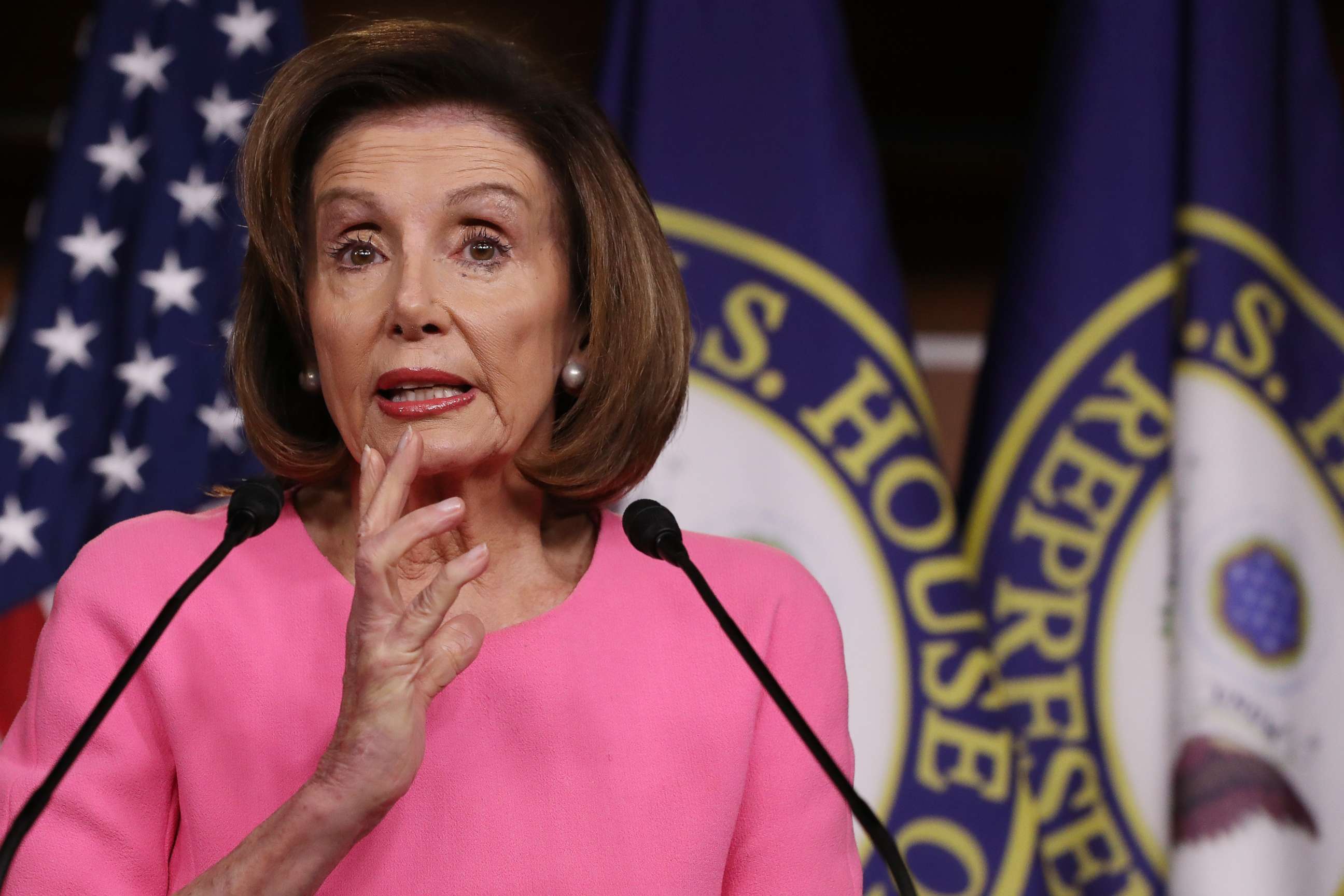
House Minority Leader Kevin McCarthy, following Pelosi, called her claim that Democrats did "jiu-jitsu" by forcing major changes "an outright lie" and said that fundamental portions of the legislation had not changed since Sunday.
Unlike Pelosi, McCarthy signaled he’s not ready to begin talks over the fourth relief package.
"I wouldn’t be so quick to say you have to write something else," he said. "Let’s let this bill work."
The House is scheduled to meet at 9 a.m. Friday to hold a short debate and then approve the massive bill by voice vote before sending the measure to President Trump's desk.
Mnuchin calls record jobless claims report 'not relevant'
Treasury Secretary Steven Mnuchin, in one of the first reactions from the Trump administration to historic jobless numbers released Thursday, in a phone interview this morning with CNBC, called them "not relevant" because, he said, the economic package under consideration in Congress now will help those put out of work, and in the long-term, people will be rehired.
"I just think these numbers right now are not relevant, and whether they're bigger or smaller in the short-term," Mnuchin said. "The good thing about this bill is the president is protecting those people, so now with these plans, small businesses hopefully will be able to hire back a lot of those people.
"By the way," he added, "lots of big companies do continue to hire, for obviously grocery stores, pharmacies, delivery services. These companies are on overtime, so I know they're hiring people as fast as they can."
The Department of Labor reported a record 3.28 million workers in the U.S. filed for unemployment claims last week in the week ending March 21, according to data released Thursday.
That's an increase of 3 million from the previous week.
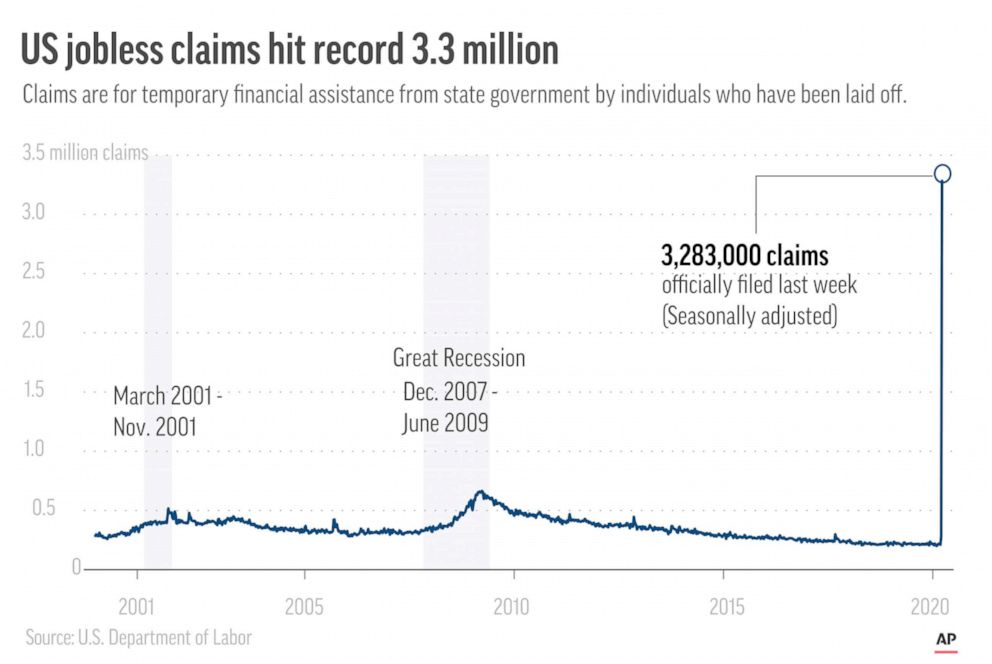
Among the hardest hit sectors was the service industry, particularly accommodation and food service. Nearly every state cited COVID-19 as the reason for the high number of claims.
During the worst week of layoffs in the great recession, 665,000 Americans filed for unemployment.
White House trade adviser Peter Navarro told Fox News this morning that the numbers were "totally expected."
"This is to be totally expected," Navarro said. "We put public health above economics in the very, very short run. So, this is no surprise. This is expected, and we should accept the news because we’re doing what we need to do to combat the virus."
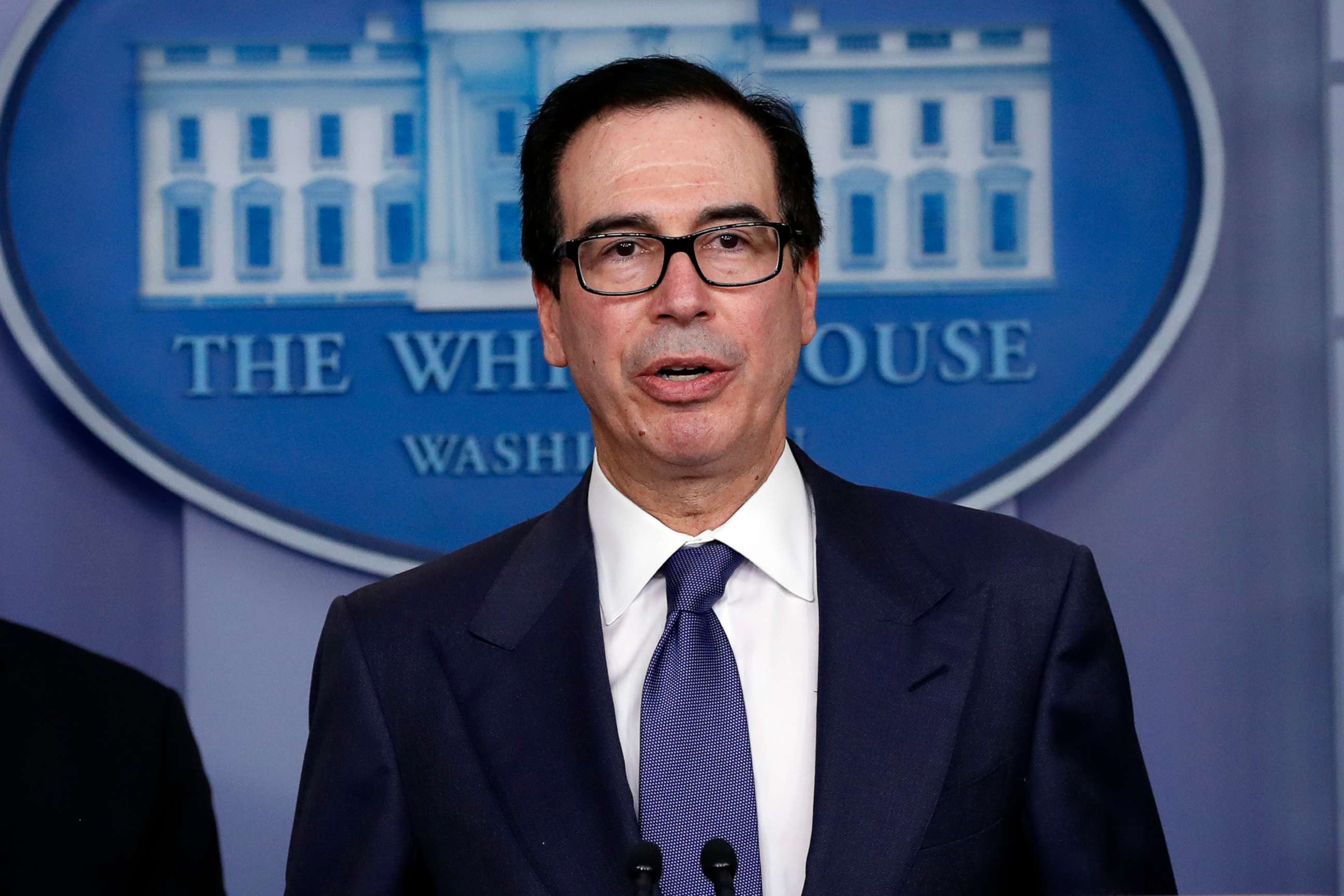
Largest economic relief bill in U.S. history passes unanimously in Senate, moves to House
Following a week of bitter negotiations, the Senate passed the largest economic relief bill in U.S. history in a unanimous vote late Wednesday: 96 to 0.
The massive $2.2 trillion economic relief package spans 880 pages and steers aid to businesses, workers and health care systems amid the coronavirus pandemic.
Four Republicans -- Sens. John Thune, Mitt Romney, Mike Lee and Rand Paul -- were absent from the votes due to self-quarantine.
Following the vote, Majority Leader McConnell released senators from Washington until April 20, though he promised to recall them if needed with 24 hours notice.
The House will convene at 9 a.m. Friday to consider the bill.
House Majority Leader Steny Hoyer said in a letter to colleagues late Wednesday that he expects the vote on final passage will be done by voice vote.
"Members who want to come to the House Floor to debate this bill will be able to do so. In addition, we are working to ensure that those who are unable to return to Washington may express their views on this legislation remotely," Hoyer said.
President Trump is expected to sign the bill if it passes the House. He congratulated Americans on the Senate vote in a tweet after midnight.
ABC News' Ben Gittleson, Jordyn Phelps, John Parkinson, Trish Turner and Allie Pecorin contributed to this report.




